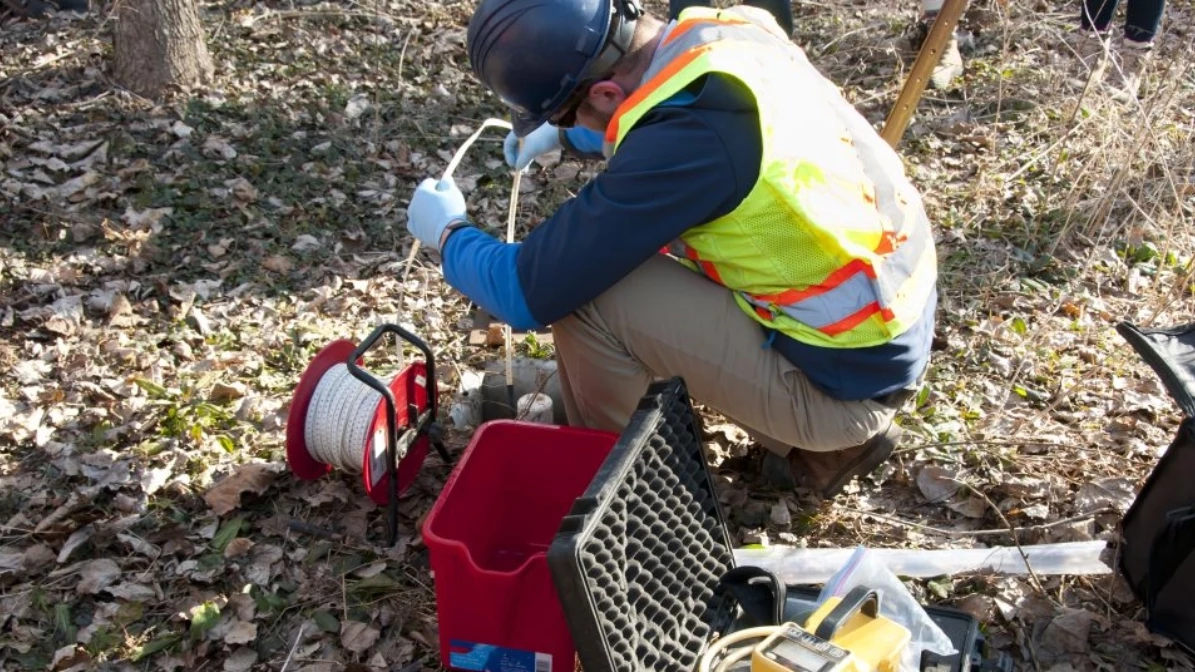After a storm, homeowners must be vigilant about the condition of their wells, as storm damage can compromise water quality and system integrity. It’s essential to inspect the wellhead for visible damage, such as cracks or flooding around the area, which may indicate contamination or structural issues.
Homeowners should also be aware of potential changes in water clarity, taste, or odor, as these can signal contamination from floodwaters or debris. Testing the water for harmful bacteria and pollutants is crucial before resuming use.
Additionally, it’s advisable to contact a professional well service to conduct a thorough assessment and make any necessary repairs or adjustments to ensure the well is safe and functional. Prompt attention to well repairs and maintenance can help prevent long-term issues and safeguard the health of your household.
How can storm damage affect a home’s well system?
Storm damage can significantly impact a home’s well system in several ways:
- Contamination of Water Supply: Heavy rainfall and flooding can introduce contaminants into the well water, including sediments, bacteria, chemicals, and debris. This contamination can compromise the safety of the water for drinking and household use.
- Structural Damage: Storms can cause physical damage to the well structure itself, such as cracks in the well casing or damage to the wellhead. This can lead to water infiltration from surface sources, increasing the risk of contamination.
- Power Outages: Storms often result in power outages, which can disrupt the operation of electric pumps and other components of the well system. This can lead to a lack of water supply and potentially cause damage to the pump if it runs dry.
- Displacement of Equipment: High winds and flooding can displace or damage well equipment, including pumps and pressure tanks, leading to malfunctions or complete system failures.
- Soil Erosion: Severe storms can cause erosion around the well, which may destabilize the structure and lead to further contamination or water access issues.
- Decreased Water Quality: The stormwater influx can change the well water’s chemical composition, leading to issues such as increased turbidity or altered pH levels, which can affect taste and safety.
- Increased Maintenance Needs: After a storm, well systems may require frequent maintenance and testing to ensure water quality and system functionality, leading to additional costs and efforts for homeowners.
Storm damage can pose serious risks to a home’s well system, making it essential for homeowners to conduct thorough inspections and water quality tests after severe weather events.
What are the signs that a well needs repair after a storm?
After a storm, homeowners should be vigilant for signs that their wells may need repair. Here are key indicators to watch for:
- Changes in Water Quality: If you notice changes in the taste, smell, or color of the water, such as cloudiness, sediment, or an unpleasant odor, this could indicate contamination or damage.
- Decreased Water Pressure: A sudden drop in water pressure or flow rate may suggest issues with the well pump or plumbing system, potentially due to storm-related damage.
- Unusual Noises: Strange noises from the well pump, such as grinding or humming, may indicate mechanical problems or damage requiring attention.
- Visible Damage: Inspect the wellhead and surrounding area for visible damage, such as cracks, displacement, or flooding around the well. Look for signs of erosion or instability in the ground.
- Bacteria Contamination: If you suspect contamination, it’s crucial to have the water tested for bacteria, particularly after flooding. A positive test indicates a need for immediate repair and treatment.
- Electrical Issues: If the well pump is electric and you experienced power outages during the storm, check for tripped breakers or blown fuses, which could indicate electrical damage to the system.
- Silt or Sediment Buildup: After heavy rain, sediment or silt may enter the well, leading to clogging or reduced water quality.
- Frequent Pump Cycling: If the pump cycles on and off more frequently than normal, it could indicate issues with the pressure tank or other components.
If you notice any of these signs, it’s essential to consult a professional, well service to assess the situation and perform necessary repairs to ensure the safety and functionality of your well system.
How much does well repair typically cost after storm damage?
The cost of well repair after storm damage can vary significantly based on several factors, including the extent of the damage, the type of well system, and the specific repairs needed. Here are some general estimates for common repair scenarios:
- Water Quality Testing: Basic contaminant testing costs $50 to $150. If more extensive testing is needed, the cost can increase to $200 or more.
- Well Pump Replacement: If the pump is damaged, replacement costs typically range from $300 to $2,000, depending on the type of pump and installation complexity.
- Well Rehabilitation: If the well has become clogged or contaminated, rehabilitation services (such as cleaning or disinfection) can cost between $300 and $1,500.
- Wellhead Repairs: Minor repairs to the wellhead, such as sealing cracks or replacing caps, can cost anywhere from $100 to $500, depending on the severity of the damage.
- Electrical Repairs: If electrical components (like wiring or controls) are damaged, repairs can range from $100 to $1,000, depending on the extent of the damage.
- Complete Well Replacement: In severe damage that cannot be salvaged, drilling a new well can cost between $5,000 and $15,000 or more, depending on depth and local regulations.
- Labor Costs: Labor costs can vary widely based on geographic location and the complexity of the repair, typically ranging from $50 to $150 per hour.
A detailed assessment from a licensed well contractor is essential to determine the specific costs associated with the repairs needed for your well after storm damage. Emergency repairs may also incur higher costs due to the situation’s urgency.
What steps should homeowners take to assess well damage after a storm?
After a storm, homeowners should take the following steps to assess potential good damage:
- Visual Inspection: Begin by thoroughly inspecting the wellhead and surrounding area. Look for signs of physical damage, such as cracks, displacement, or erosion. Check for flooding around the well, which may indicate potential contamination.
- Check for Sediment and Debris: Inspect the well for any visible sediment, debris, or silt accumulation that may have entered the well during the storm. This can affect water quality and system function.
- Examine the Pump and Equipment: If accessible, inspect the pump and any exposed electrical components for signs of damage, corrosion, or malfunction. Ensure that all connections are secure and that there are no visible issues.
- Test Water Quality: Conduct water quality testing to check for contaminants, including bacteria, nitrates, and other pollutants that may have entered the well during the storm. Testing before and after any cleaning or repair efforts is advisable.
- Monitor Water Flow and Pressure: Check the water flow rate and pressure. A sudden decrease in pressure or flow may indicate damage to the well or pump system that needs attention.
- Listen for Unusual Noises: Pay attention to any unusual sounds from the pump or well system, such as grinding or excessive cycling, which may indicate mechanical issues.
- Consult Local Regulations: Familiarize yourself with regulations regarding well inspections and repairs. Some areas may require official inspections or permits for well repairs.
- Document Findings: Record any damage or issues observed, along with photographs if possible. This documentation can be helpful when consulting with professionals or for insurance claims.
- Contact a Professional: If you notice any signs of damage or have concerns about water quality, contact a licensed well contractor for a thorough inspection and assessment. They can provide expert advice and recommend necessary repairs.
- Consider Future Prevention: After assessing the damage, consider implementing preventative measures, such as well caps, proper drainage around the well, and routine maintenance to reduce the risk of future storm damage.
Taking these steps can help ensure that any damage to the well system is identified and addressed promptly, safeguarding the health and safety of your household’s water supply.
Ensure Your Well is Storm-Ready Today!
At Well Doctor LLC, we understand the importance of a reliable water supply, especially after a storm. If your well has experienced damage, it’s crucial to act quickly to ensure its safety and functionality.
Our team of experts is dedicated to providing comprehensive assessments and repairs to get your well back in shape. We offer thorough water quality testing, mechanical inspections, and prompt repairs to address any issues caused by storm damage.
Don’t wait until it’s too late—contact Well Doctor LLC today to ensure your well is storm-ready and secure for you and your family’s needs!

